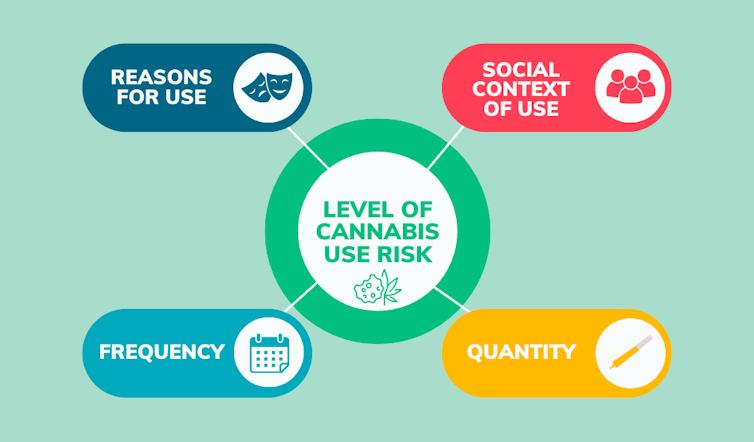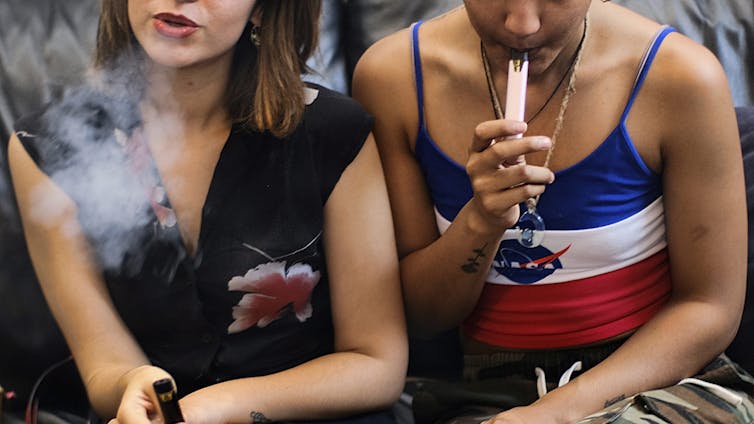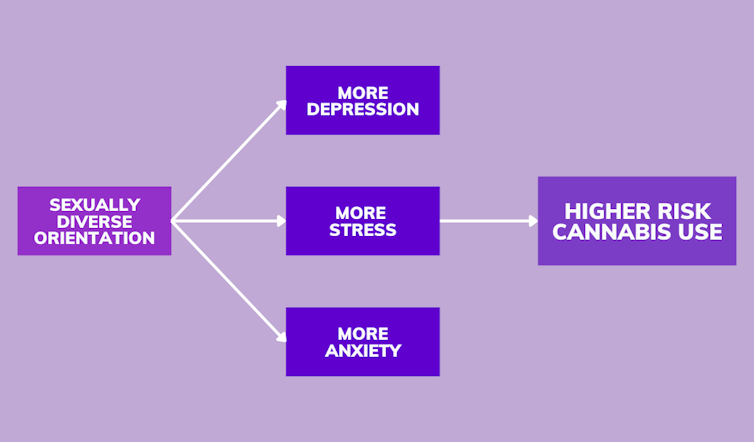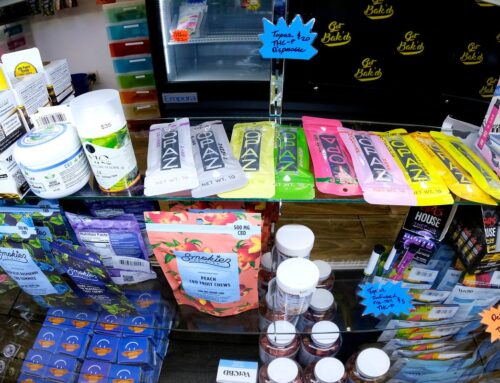Stress, not identity, drives riskier cannabis use among sexually diverse youth, new study
May 4, 2025
Cannabis is undoubtedly a polarizing substance. On one side: a century of restrictive laws made cannabis illegal. This was based on little science. On the other side: a torrent of wellness claims encourage consumers to buy cannabis products. These claims are also based on little science.
With cannabis discourse evolving so rapidly, informed decisions about its use can be challenging. These questions are important for 20- to 24-year-olds, one in three of whom report using cannabis in the past year.
Are there risks involved for these cannabis users?
The good news is that an increasing amount of research is available to guide both individuals and policymakers. Our new study, which examines cannabis use among young adults, contributes to this body of information. We provide insights into what may increase risk, and which young people are more likely to experience this risk.
What makes cannabis use risky?
First, using cannabis doesn’t necessarily lead to problems for those who use. In fact, many people experience different benefits from their cannabis use — that’s why they use it in the first place.
At the same time, about five per cent of people who use cannabis in Canada are at risk for addiction and other harms.
Why, then, do some people develop these problems while others don’t?
Cannabis use can look very different from person to person depending on aspects like frequency, reasons for use, social contexts (whether you’re using alone or with others) and quantity. In our recent study, we found that certain characteristics tend to be linked to cannabis use problems.
These include:
-
Using alone
-
Using multiple times per week
-
Using more than two grams per session
-
Using to cope with negative feelings
-
Using to make activities more pleasurable
-
Using to have new experiences

Our findings echo other research, especially when it comes to frequency, using to cope and using alone. This highlights how cannabis use problems don’t happen in a vacuum: they’re part of a more complex pattern of use.
The impact on sexually diverse youth
To complicate things further, various groups of young people may be more or less at risk of falling into these patterns. Of particular interest are sexually diverse youth (for example, lesbian, gay, bisexual or queer youth), as they are more likely both to use cannabis, and to develop problems linked to their use.
Our analysis revealed a striking difference: sexually diverse youth were three times more likely than heterosexual youth to have riskier patterns of cannabis use.
This does not reflect any inherent differences between these groups. Rather, sexually diverse youth also reported higher stress levels, and this is what explained their riskier cannabis use.
We also explored other explanations.

(AP Photo/Richard Vogel)
For instance, sexually diverse youth also experience more depression and anxiety, and this has been linked to cannabis use. However, even when taking depression and anxiety into consideration — which were higher among sexually diverse youth in our study — stress stood out as the key association with risky cannabis use.
Recognizing the role of stress in cannabis use disparities among sexually diverse youth is not new.
In fact, the most prominent reason put forward to explain these disparities is that sexually diverse youth face an additional challenge in their lives identified as “minority stress.” Minority stress refers to the collection of health consequences resulting from marginalization, ranging from outright discrimination to internalizing negative messages about oneself.
Minority stressors have been linked to cannabis use among sexually diverse youth. However, our study reveals something a bit different. We found that more general sources of stress — like not feeling in control of one’s life or being overwhelmed by unexpected events — were key in predicting riskier use.

Better mental health support is key
The bottom line is that sexually diverse youth are facing more challenges and stress than their heterosexual counterparts.
With growing sociopolitical violence against LGBTQ+ people in the United States and increasing anti-LGBTQ+ sentiments in Canada, these disparities are likely to become even more pronounced.
Marginalization spreads in insidious ways. For sexually diverse youth, this means not only having more stress to cope with, but also fewer adequate, safe mental health resources. Indeed, sexually diverse youth face many barriers when it comes to accessing mental health services.
What our study underscores then, is that cannabis use can become a key way of coping when stress is high and other options for support are unavailable.
There are lots of ways that cannabis use can be lower risk: using less often, using with others rather than alone, using less at a time, and having other methods aside from cannabis to cope with negative feelings.
However, these options must be available to sexually diverse youth. The implication therefore becomes clear: if we want to tackle disparities around cannabis use problems, we must improve mental health support for sexually diverse youth.
It’s essential we don’t lose sight of the uneven terrain young people are navigating — especially those already facing elevated stress due to social marginalization. Risk isn’t inherent to cannabis, but it emerges in context. Our findings underscore the need for accessible, affirming mental health resources that can offer real alternatives to coping through substance use.
Search
RECENT PRESS RELEASES
Related Post




